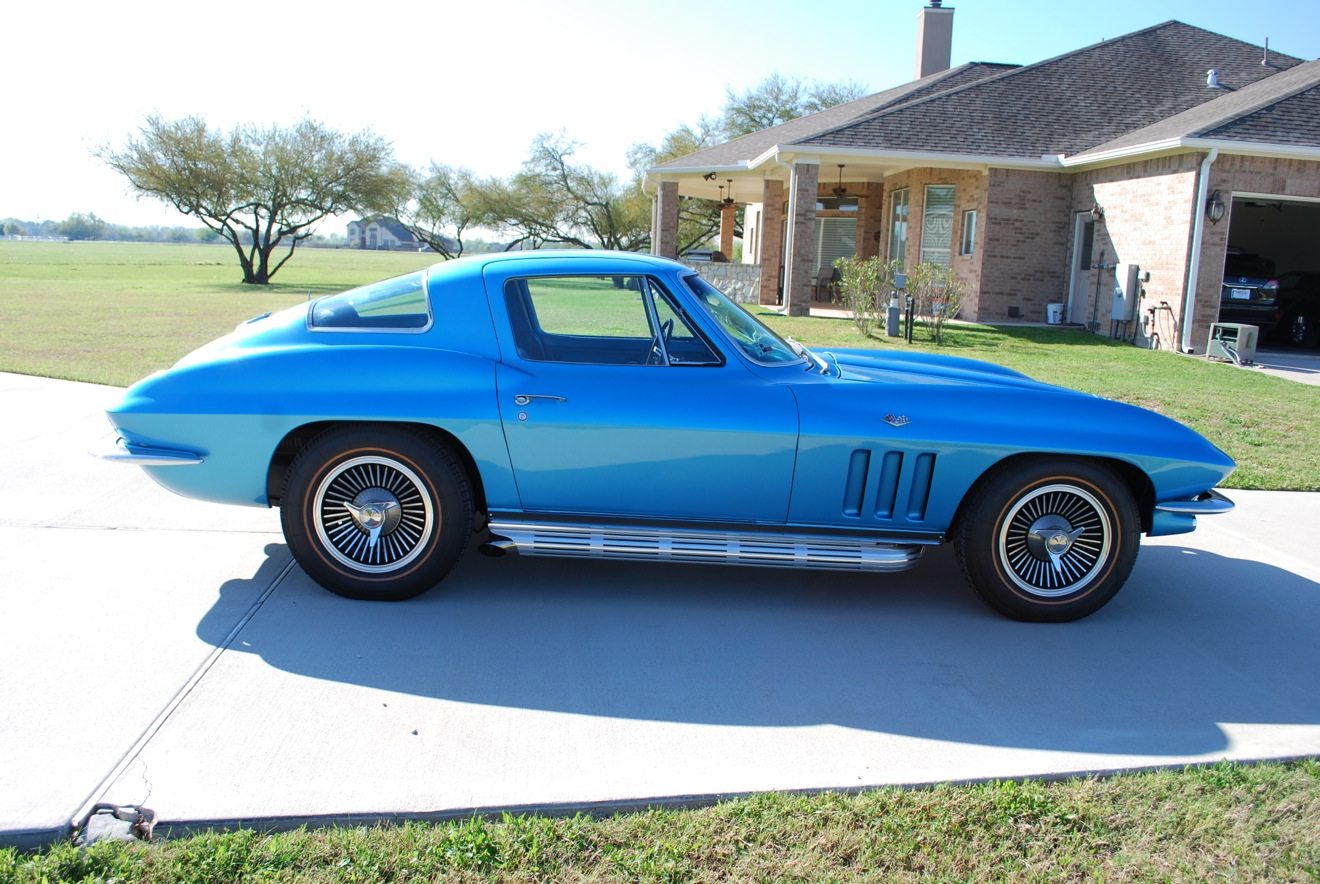

For one, the Sting Ray’s front end was mildly altered with the introduction of an “egg-crate” grille insert which replaced the previously installed horizontal bars. There were minor modifications made to the Corvette’s appearance. With the exception of the dramatic new lineup of engine choices, there was little else that was deemed “new” for the 1966 model year.
#REDLINE TIRES 1966 CORVETTE MANUAL#
Even amongst the earlier small-block options that had been available on earlier Corvettes, these two engines were arguably the best all-around engines.Īdditionally, both could be paired with the Powerglide automatic, the standard three-speed manual, or either of the optional four-speed manual transmissions. The introduction of the big-block V-8 engine captured the imagination of Corvette consumers the world over, and in no time at all, the demand for big-blocks far surpassed those of the conventional 327 small block Chevy engine.Īs a result, the small-block engine options were reduced from five to two for the 1966 model year, with only the 300-horsepower (L75) and 350-horsepower (L79) versions remaining available to prospective consumers. When the official ratings were reduced, the decision to make this change was purely administrative and was not the result of any changes made to the engines. Similarly, the 390 horsepower engine was initially rated at 400 horsepower.

Although initially listed as a 450hp engine, the solid lifter 427ci engine’s rating was later reduced to 425hp shortly after its introduction for reasons unknown. Corvettes equipped with this type of engine received a special bubble hood first seen on the 1965 Corvettes equipped with the 396 cubic inch engine. Lastly, it required stouter, shot-peened half shafts and U-joints, as well as a higher-capacity radiator and sump.ĭID YOU KNOW: The 427 cubic-inch engines were introduced in the 1966 model. It also required that the Corvette was equipped with an upgraded suspension, similar to the setup on the 396 package.

First, it had to be ordered in combination with Positraction and the close-ratio Muncie four-speed transmission. There were limitations to ordering the big block 427 cubic inch engine. Given the fact that, especially in the Sixties, engine outputs were sometimes deliberately understated, it is not unreasonable to assume that the output of these two engines was closer to 420 and 450 horsepower respectively. Though it had no more horsepower than the previously developed 396 cubic inch engine, the 427 did pack quite a bit more torque-460lbs/ft instead of 415. Perhaps fortunately for Corvette, it was Carroll Shelby’s two-seat Cobra, which featured its own 427 cubic inch V8 engine that prompted the change of opinion.Ĭhevrolet now felt it would also need a 427 cubic inch engine, and it materialized for the 1966 model year.Īlthough it was effectively a 396 cubic inch engine with a larger 4.25-inch bore, the new 427 big-block engine came in two forms: the relatively mild 元6, which featured a hydraulic-cam and produced 390 horsepower on 10.25:1 compression, and the truly awesome L72, a 425 horsepower engine with 11:1 compression, larger intake valves, a bigger Holley four-barrel carburetor on an aluminum manifold, mechanical lifters, and four-hole (instead of two-hole) main bearing caps. This turnabout in events was rather interesting, especially given GM management’s earlier decree that no car line smaller than a full-size model would carry an engine larger than 400 cubic inches. With the 1966 Corvette arriving after General Motors’ recent, overwhelming success with the 427 Sting Ray, there was no question that the newest Corvette model would continue to feature big-block engines. C2 Corvette for Sale 1966 Corvette Overview – The Ultimate Guide


 0 kommentar(er)
0 kommentar(er)
